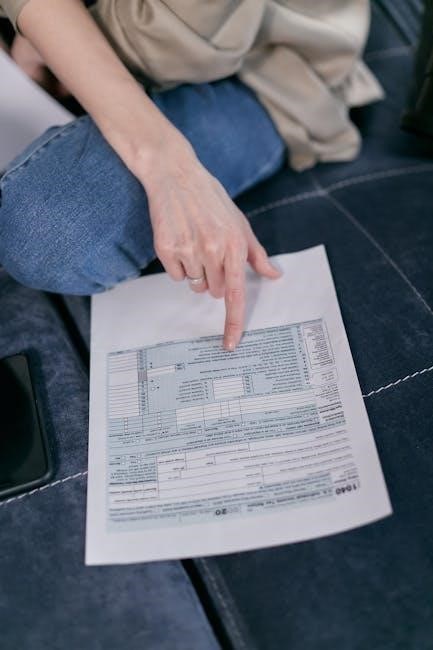Purpose of Form 4136
The purpose of Form 4136 is to claim a credit for federal tax paid on fuels, including certain nontaxable uses of fuel, the alternative fuel credit, and a credit for blending a diesel-water fuel emulsion. This form is used to calculate the amount of credit that can be claimed, and it provides detailed instructions on how to do so. The form has three pages that comprise twelve fuel use categories, and for each category, the taxpayer must enter the number of gallons used and the amount of credit. The purpose of Form 4136 is to ensure that taxpayers who use fuel for nontaxable purposes can claim a credit for the federal tax paid on that fuel. The form is an important part of the tax filing process for businesses and individuals who use fuel for qualified purposes. The instructions for Form 4136 provide guidance on how to complete the form and claim the credit.
Deadline for Filing Form 4136
The deadline for filing Form 4136 is April 18th, and it must be completed and attached to the tax return by this date. This form is typically filed annually, and the deadline may vary depending on the tax year. The IRS provides detailed instructions on how to file Form 4136, including the deadline for submission. It is essential to meet the deadline to avoid any penalties or delays in processing the tax return. The form can be filed electronically or by mail, and the taxpayer should ensure that it is received by the IRS on or before the deadline. The deadline for filing Form 4136 is crucial, and taxpayers should plan accordingly to avoid any last-minute rush. By meeting the deadline, taxpayers can ensure that their tax return is processed promptly, and they can receive any refund due to them. The IRS website provides more information on the deadline for filing Form 4136.

Eligibility for Fuel Credit
Fuel Use Cases
Form 4136 lists various fuel use cases, including twelve categories, to determine eligibility for fuel credits. The form provides detailed instructions on how to calculate credits for each category.
The fuel use cases include off-highway business use, farming, and other non-taxable uses of fuel, with specific guidelines for each category.
By following the instructions and guidelines provided, users can accurately determine their eligibility for fuel credits and complete the form correctly.
The form also includes space for users to enter the number of gallons used and the amount of credit for each fuel use case, making it easier to calculate the total credit amount.
Overall, the fuel use cases listed on Form 4136 help users to claim the correct amount of fuel credits and reduce their tax obligations.
The instructions provided on the form ensure that users can accurately complete the form and claim their fuel credits.
Calculation of Fuel Credit
The calculation of fuel credit on Form 4136 involves determining the amount of credit for each fuel use case.
The form provides a table to help users calculate the credit amount, making it easier to determine the correct credit amount.
Users must also consider any blending or mixing of fuels, as this can affect the credit amount, and follow the instructions carefully.
The calculation of fuel credit is an important step in completing Form 4136, as it determines the amount of credit that can be claimed.
By following the instructions and using the tables provided, users can ensure that they calculate the fuel credit correctly and claim the correct amount of credit.
The calculation process is straightforward, but users must ensure that they have all the necessary information and follow the instructions carefully to avoid errors.
Overall, the calculation of fuel credit on Form 4136 is a critical step in claiming fuel credits and reducing tax obligations.

Instructions for Completing Form 4136
Reading Detailed Instructions
To accurately complete Form 4136, it is essential to read the detailed instructions provided, which outline the necessary steps and calculations for claiming fuel credits. The instructions are typically found on the IRS website or in the form’s accompanying documentation. By carefully reading through the instructions, users can ensure they are eligible for the credit and understand how to calculate their fuel credit amount. The instructions also provide information on which fuel use cases are eligible for the credit and how to report them on the form. Additionally, the instructions may include examples or worksheets to help users calculate their credit amount. It is crucial to follow the instructions carefully to avoid errors or miscalculations that could result in a delayed or denied refund. By taking the time to thoroughly read and understand the instructions, users can confidently complete Form 4136 and claim their fuel credit. The instructions are an essential resource for anyone completing the form.
Relation to Other Tax Forms
Form 4136 is related to other tax forms, such as Form 1040 and Form 720, as it is used to claim a fuel credit that can be applied to an individual’s tax liability. The credit calculated on Form 4136 can be used to reduce the amount of tax owed on Form 1040. Additionally, if an individual is required to file Form 720, they may also be eligible to claim a fuel credit on that form. It is essential to understand the relationship between these forms to ensure accurate reporting and to avoid claiming the same credit on multiple forms. The IRS provides instructions and guidance on how to report fuel credits on these forms to help individuals navigate the process. By understanding the relationship between Form 4136 and other tax forms, individuals can ensure they are taking advantage of all eligible credits and deductions. This helps to minimize tax liability and avoid potential errors or penalties. The forms are interconnected, and correct completion is crucial.

Claiming Refund on Form 4136
Refund Claims

To make a refund claim on Form 4136, taxpayers must follow the instructions provided by the IRS, which include completing the form accurately and attaching it to their tax return. The form is used to claim a credit for federal tax paid on fuels, and the refund claim is based on the amount of credit calculated. Taxpayers can claim a refund for the amount of credit that exceeds their tax liability, and the refund will be paid to them after the IRS processes their tax return. The IRS provides detailed instructions on how to complete the form and make a refund claim, including information on what documentation is required and how to calculate the credit. By following these instructions, taxpayers can ensure that their refund claim is processed correctly and efficiently. The IRS also provides guidance on how to resolve any issues that may arise during the refund claim process, and taxpayers can contact the IRS directly if they have any questions or concerns.
